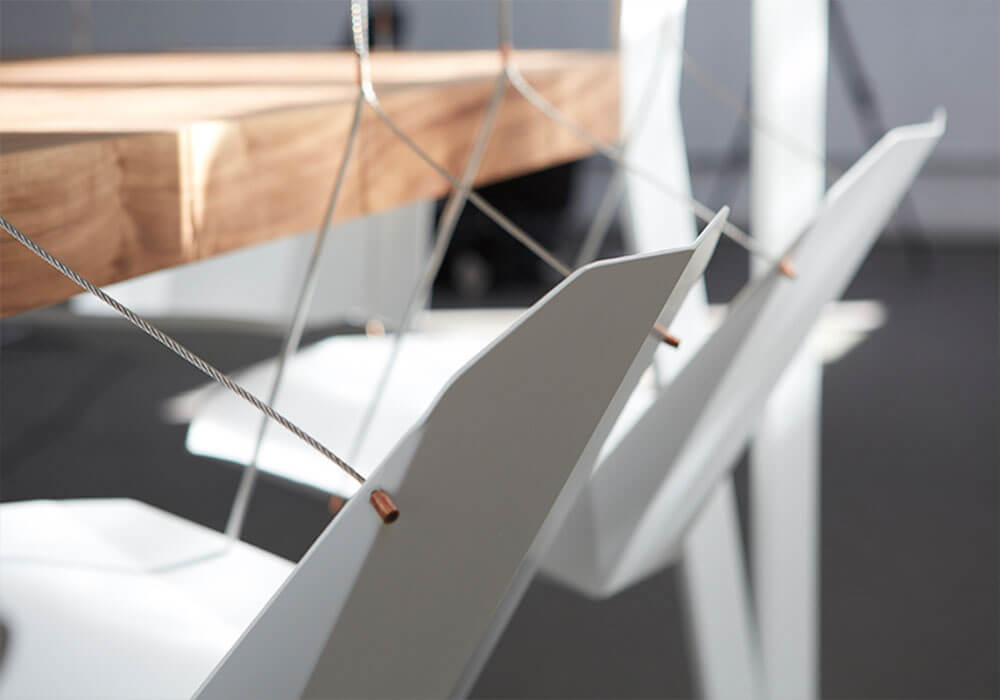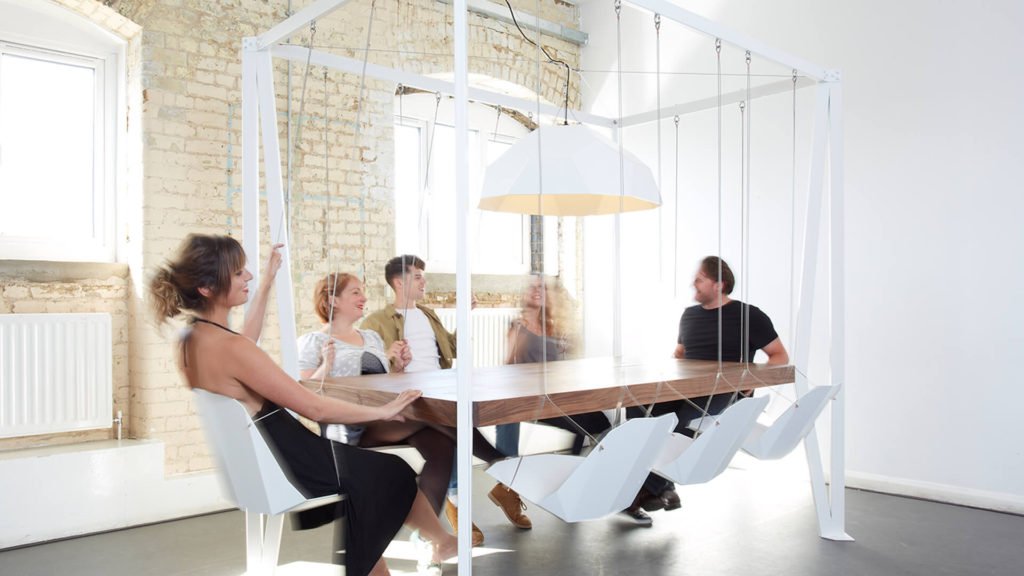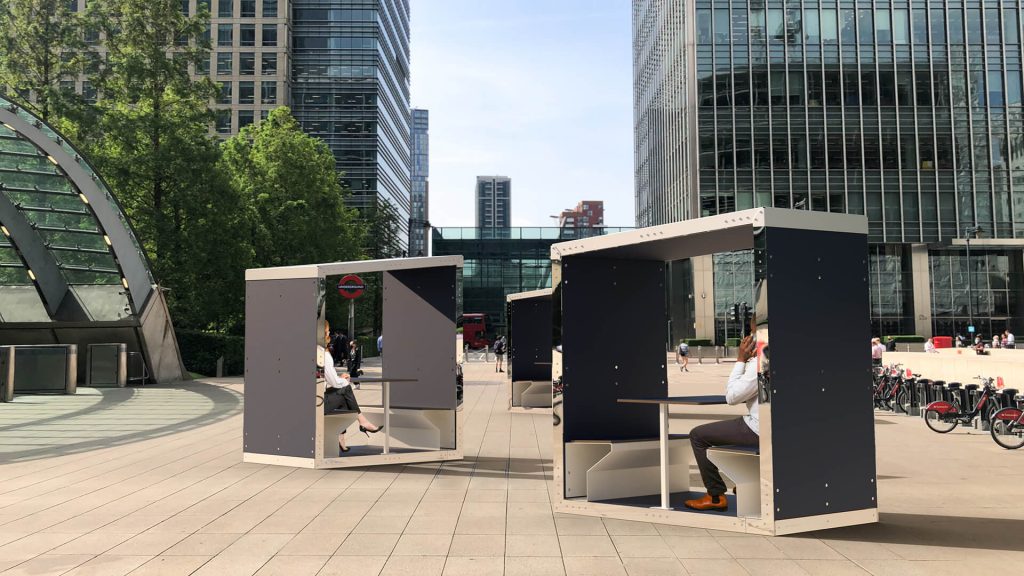The evolution of office furniture through the ages
The evolution of office furniture through the ages
Most of us spend our working lives indoors, and the spaces we occupy play a huge role in the way we think and operate at work as well as how we interact with colleagues. Over time, the humble office has transformed significantly, from the traditional rows of cubicles ever present in the early 20th century to today’s open-plan offices, replete with pop art and standing desks. In fact, very few interior spaces have undergone as much transformation as the office. As employers sought to gain more and more productivity from their employees, the furniture they used played a crucial role.
Office furniture has come a long way since the days of rigid wooden desks and uncomfortable chairs but how exactly did we arrive at the modern open-plan office, and what other trends in office furniture have come and gone throughout history?

The origins of the modern office
Hot on the heels of the creation of the world’s first company, the Dutch East India Company, in 1602 came the first recorded office. The company’s headquarters in Amsterdam featured large wooden desks, similar to those seen in schools and libraries, where employees sat and wrote with quill pens.
Office furniture remained relatively unchanged until the Industrial Revolution in the late 18th and early 19th centuries, when new manufacturing techniques led to the mass production of office furniture. This allowed for more variety in styles and shapes, as well as the introduction of new materials such as steel and glass.

Birth of the cubicle
Born out of the very 20th zeitgeist that spruiked the values of individualism and ultra-efficiency, the cubicle was introduced in the 1960s by designer Robert Propst for the furniture company Herman Miller. The “Action Office” featured partitions that effectively sectioned workers off into their own private spaces, minimising distraction and promoting productivity.
As we well know, this workspace (and worker) compartmentalization eventually garnered a negative reputation as “cube farms” became the site and sign of workplace isolation and boredom. It’s little wonder why the Wachowski siblings chose an escape from such a workplace as the beginning of Neo’s enlightenment to become the chosen one in their famous 1999 reality-bending masterpiece, The Matrix.
The rise of the open-plan office
By the late 20th century, there was a growing sentiment that the cubicle failed to stimulate creativity and collaboration. In response, there was a shift toward open-plan offices that facilitate more fluid communication and idea-sharing among colleagues.
The rise of technology also played a key role in the move to open-plan offices as it allowed for a more mobile workforce, rendering traditional desk setups irrelevant. This has led to the emergence of modern office furniture such as standing desks and multi-use workstations that can be easily rearranged to suit different tasks.
The modern office also places a greater emphasis on ergonomics, with adjustable chairs and desks designed to improve comfort and posture for employees. With more focus on wellness and the links between physical health and productivity, it’s not uncommon to see offices equipped with treadmill desks or even yoga balls to encourage movement throughout the workday.
Statement office furniture
Office furniture is now a reflection of a company’s values and culture. From funky lounge chairs to bean bags to swings, the modern office is a far cry from the rigid cubicles of the past.
Companies are also increasingly looking for furniture that promotes sustainability and eco-friendliness, such as desks made from recycled materials or sustainable wood.
Investing in a striking piece of furniture art says a lot about a company and generates a feeling of uniqueness for employees and visitors alike. Start-up companies in particular often use statement furniture as a way to stand out and convey their creativity and innovation to potential investors and clients.
But there are also economic benefits as well. The fact that Google is widely known for its fun and whimsical office spaces (featuring slides) has helped it attract top talent and boost employee morale, ultimately leading to increased productivity and profitability, not to mention garnering feel-good marketing points for the company.

The Duffy Swing Table
Designed by Christopher Duffy, the Swing Table is a piece of statement office furniture that combines function and play in a unique way. As the name suggests, it features swings that double as chairs, encouraging employees to let loose and have a bit of fun during their workday.
But beyond just being a conversation starter chairs suspended from overhead also force employees to engage their core muscles and improve posture, providing a subtle form of exercise during long meetings.
It may sound unorthodox, but swinging on a swing is a proven natural relaxant. A gentle rocking motion stimulates the raphe system in the brain, releasing serotonin and endorphins to improve mood and stimulate creativity. Imagine your boardroom meetings with executives swinging back and forth, brainstorming ideas in a whole new light.
Plus, the fact that it is made from ethically supplied materials and can be easily disassembled and moved to a new location and used outdoors makes it a sustainable choice for the modern office.

Final thoughts
Office furniture has evolved greatly over the years, shaped by changes in technology, workplace culture, and values. No longer just a practical tool for getting
work done, it has become a reflection of a company’s identity and an avenue for promoting wellness and creativity among employees. Who knows what the future might bring for the modern office space? Perhaps we’ll all be taking meetings while floating on hover chairs. Only time will tell.
At Duffy, we believe in the power of play and its potential to enhance productivity and creativity in the workplace. That’s why we offer a range of playful, unique swing tables, each one designed to inspire imagination and bring a bit of fun into the office. See what we have to offer and inspire some playfulness into your workday. Your employees (and bottom line) will thank you.














